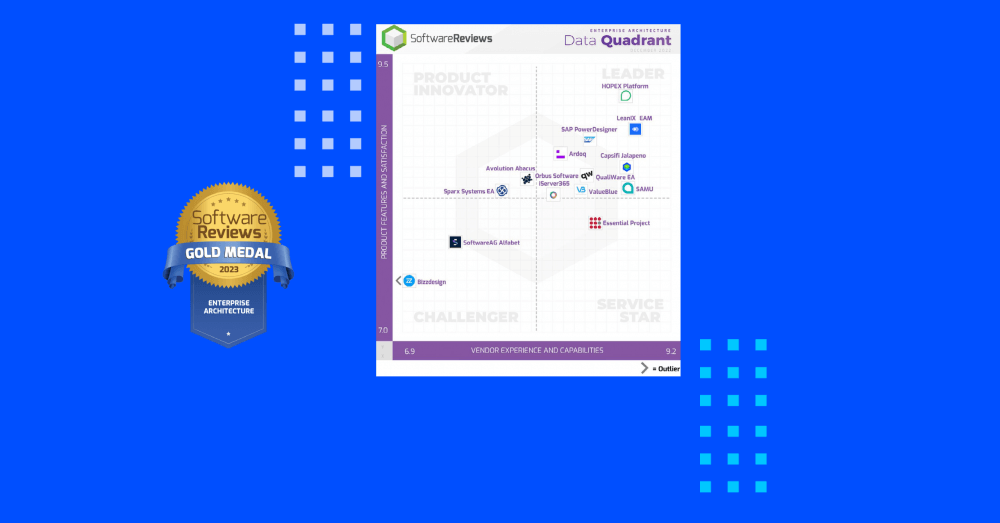Company > News & insights
Business Model Innovation is the Purpose of Digital Transformation

Business Model Innovation is the Purpose of Digital Transformation
The most significant consequence of the recent wave of digital transformation sweeping the global economy, has been an exponential acceleration in the pace of change, heralding huge opportunities for new ways of doing business and of course, significant risk for companies that are not able or choose not to rapidly adapt. Incumbent market leaders in every industry are facing unrelenting pressure to change and ‘go digital’ in response to the continuously evolving digital demands of their markets, customers, and competitors.
Faced with the need to modernize and compete in online markets and virtual space, businesses are racing ahead with transformation initiatives fueling a wave of technology investment unlike anything we have ever seen. Paradoxically however, the challenge and opportunity of digital transformation framework is not in the technology; it is fundamentally an exercise in Business Model Innovation. Companies that can successfully navigate the digital divide, will do so by entirely reinventing their business model to address the transformative opportunities in doing business digitally.
Business model innovation starts with an innovative strategy
The emergence of a universally connected digital economy has shifted competitive advantage to businesses that have the ability to continuously adapt and respond at lightning speed.
The democratizing force of digital disruption is lowering barriers of entry and shifting competitive advantage to new, greenfield organizations that are unencumbered by old ways of working, or nimble enough to adapt, innovate and dynamically craft new digital business models that can take advantage of the digital economy and their increasingly tech-savvy customers.
The truth is that many of the world’s leading companies were simply not engineered for the digital world. Systems are outdated, operations complex, processes inefficient, business knowledge fragmented, and value propositions are missing the mark. Without a complete overhaul of the business model, no amount of technology will solve these many problems. Digital maturity is the product of strategy, culture, and leadership.
The foundational building blocks for engineering a digital business are a clearly defined Strategic Purpose and a clearly articulated Business Operating Model. These allow a company to understand and explain three things: why the business exists, how it operates, and what the company must do to provide value to stakeholders.
A consolidated, dynamic, constantly evolving articulation of the business purpose and operation, represents the most important core strategic asset of a business and is fundamental to the promotion of a culture of continuous transformation.
The Digital Edge – Designing for customers first
Any digital strategy’s first step is making an assessment of the evolving needs of customers, like for example, who they are and why or how their needs are changing in the context of digital.
Ultimately, a comprehensive understanding of their customers allows the business to create digital value propositions that better align their products, services and even values with the evolving digital demands that customers now expect. A clear definition of customer segments and their unique needs will easily help guide and improve innovation decision-making in all areas of the organization.
Businesses generally require a much greater understanding of their customers than they currently have available, which is fueling increased investments in techniques for advanced customer insight through segmentation, value engineering, journey mapping, satisfaction measurement, customer experience and human-centered-design.
All this rich knowledge and analysis needs to be deeply connected and aligned to the underlying value streams of business capabilities that enable the delivery of products and services via the business operating model. Customer oriented insight that is traceable to underlying operating model capability, not only expedites decision-making but enables business leaders to make successful, strategic choices.
Conclusion
As organizations become increasingly sophisticated in responding to the demands for agility and ongoing digital innovation, clear & holistic insight into the dynamics of the business operation becomes an increasingly essential imperative for executive leaders.
Perfect decision making requires and focuses on more than just perfect information. It requires a comprehensive understanding of the intricate interplay of all the dynamic, connected parts within the fascinating machinery of a business operation.
We believe that the success stories of the digital era will be from those people who have recognized that technology is a commodity, the most important strategic asset that they should be protecting and investing in is…THE BUSINESS MODEL.
Key Takeaways From This Article
- Digital technology has effectively shifted from being a key enabler of business efficiency to becoming a fundamental driver of strategic innovation.
- Creating a digital transformation framework is one of the best ways for companies and employees to thrive.
- Collecting the appropriate data and information for your business will allow stakeholders to better align their products and services.
Let’s Get Digital
If you would like to learn how our digital transformation platform can offer you real results, check out our solution anytime.
Ready to start your transformation roadmap and communicate with a trusted expert? Contact our team now.

